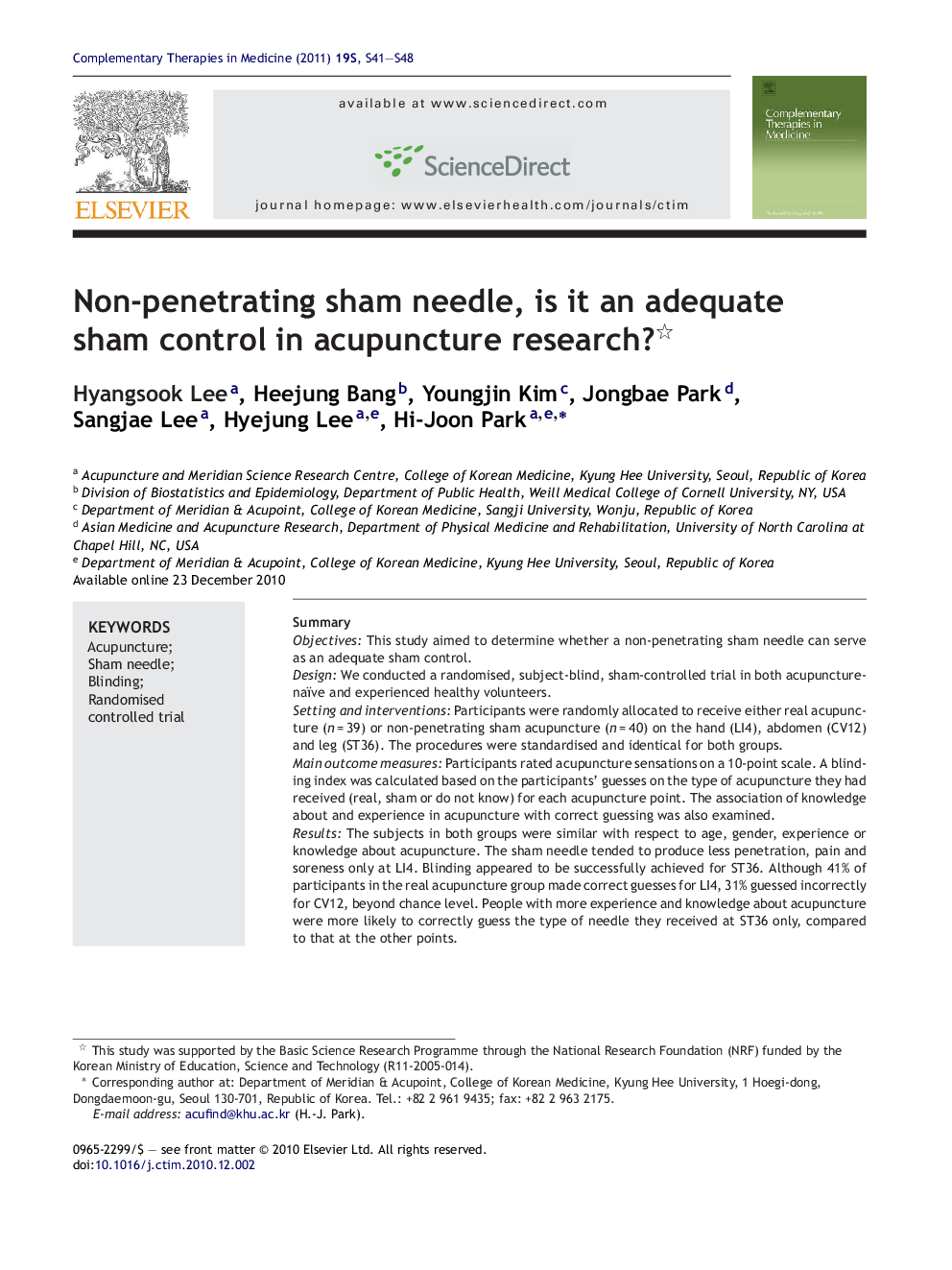| Article ID | Journal | Published Year | Pages | File Type |
|---|---|---|---|---|
| 2629397 | Complementary Therapies in Medicine | 2011 | 8 Pages |
SummaryObjectivesThis study aimed to determine whether a non-penetrating sham needle can serve as an adequate sham control.DesignWe conducted a randomised, subject-blind, sham-controlled trial in both acupuncture-naïve and experienced healthy volunteers.Setting and interventionsParticipants were randomly allocated to receive either real acupuncture (n = 39) or non-penetrating sham acupuncture (n = 40) on the hand (LI4), abdomen (CV12) and leg (ST36). The procedures were standardised and identical for both groups.Main outcome measuresParticipants rated acupuncture sensations on a 10-point scale. A blinding index was calculated based on the participants’ guesses on the type of acupuncture they had received (real, sham or do not know) for each acupuncture point. The association of knowledge about and experience in acupuncture with correct guessing was also examined.ResultsThe subjects in both groups were similar with respect to age, gender, experience or knowledge about acupuncture. The sham needle tended to produce less penetration, pain and soreness only at LI4. Blinding appeared to be successfully achieved for ST36. Although 41% of participants in the real acupuncture group made correct guesses for LI4, 31% guessed incorrectly for CV12, beyond chance level. People with more experience and knowledge about acupuncture were more likely to correctly guess the type of needle they received at ST36 only, compared to that at the other points.ConclusionsA non-penetrating sham needle may successfully blind participants and thus, may be a credible sham control. However, the small sample size, the different needle sensations, and the degree and direction of unblinding across acupuncture points warrant further studies in Korea as well as other countries to confirm our finding. Our results also justify the incorporation of formal testing of the use of sham controls in clinical trials of acupuncture.
